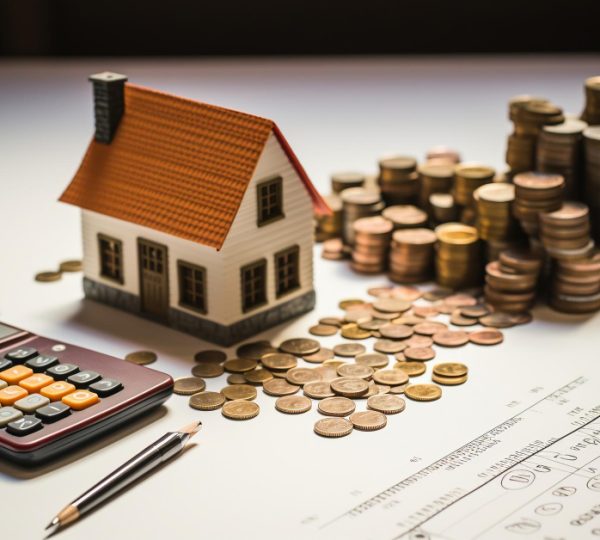What Is Happening In The Housing Market Now, And What Could Happen Next
The usually raging housing boom has slowed down quite quickly. As homebound individuals looked for new homes during the pandemic, helped by historically low mortgage rates, the U.S. housing market saw a boom. Real estate brokers now claim homes are sitting longer, and sellers are forced to drop their ambitions. Previously, they had reported buyer lineups outside open houses and bidding fights on the back deck. That has buyers and sellers considering selling and wondering where they stand. Our poll reveals that doubt has crept into many buyers’ thoughts as recession fears weigh on consumer outlooks, according to Danielle Hale, the chief economist at Realtor.

Below are the leading causes of the unstable housing market.
Housing Rates
The increase in mortgage rates is the primary cause of the slowdown. The 30-year mortgage is the current market’s most popular product and the subject of more than 90% of all new mortgages, with an average interest rate that began the year at a little over 3%. According to Mortgage News Daily, it is currently little more than 6%. Therefore, the monthly payment for someone purchasing a $400,000 house would be around $700 more now than it might have been in January.
Price and Supply
High costs and a lack of supply are two other causes of the downturn. The S&P Case-Shiller nationwide house price index, shows that prices have increased by 43% since the coronavirus outbreak began. According to Realtor.com, the number of properties for sale increased by 27% at the beginning of September compared to the same period last year. Even if the difference seems significant, it is still insufficient to compensate for the chronic scarcity of available houses for sale. In comparison to 2019, the active stock is still 43% lower. Additionally, the number of new listings fell by 6% at the end of November, which has caused alarm among prospective sellers since more homes are staying on the market for a long time.
Paul Legere, a buyer’s agent with the Joel Nelson Group in Washington, D.C., specialized in the competitive Capitol Hill neighborhood and reported a 20 percent increase in listings right after Labor Day, bringing the total to 171. In contrast, there were just 65 properties posted for sale in March; thus, he now refers to the market as “bloated.” “This is a fairly typical post-Labor Day inventory boost, and it will be extremely revealing to observe how the market absorbs the new inventory in about a week,” he added. Inventory is declining nationwide due to homebuilders cutting back on production as fewer consumers see their models. According to the U.S., housing starts for single-family houses decreased by 18.5% in July compared to July 2021 Census.
The National Association of Home Builders said that homebuilder confidence in the single-family market entered negative territory in August for the first time since a brief drop at the beginning of the epidemic. Sales were down, and customer traffic was minimal, according to builders.
In the August report, NAHB Chief Economist Robert Dietz stated, “tighter monetary policy from the Federal Reserve and persistently high building costs have brought on a housing recession.”
Still, there are buyers in the market.
Despite the expensive for sale and similarly costly rental markets, buyers still exist. According to data, some homebuyers are finding silver linings in the shape of lessening competition for an increase in the number of for-sale property options, according to Hale of Realtor.com. “This fall should provide somewhat improved possibilities to discover a property within budget,” says one buyer. “This is especially true for purchasers who are being innovative, like by researching smaller areas.”
House price hikes are finally beginning to slow down. According to Black Knight, a company that provides mortgage technology and analytics, they fell by 0.77% from June to July, marking the first monthly dip in over three years. Despite appearing minor, the decrease represents the most significant one-month cost drop since January 2011. Aside from the 0.9% loss in July 2010, which occurred during the Great Recession, it is also the second-worst July result since records began in 1991.
Affordability Woes
However, that price decline will not significantly affect the affordability dilemma created by rising mortgage rates. The least inexpensive week for housing in 35 years occurred as rates spiked dramatically after falling marginally in August. With a 30-year mortgage and 20% down, the average property’s monthly principal and interest payments now require 35.51% of the median income. In June, the payment-to-income ratio hit a 35-year high of 35.49%, according to Andy Walden, vice president of enterprise research and strategy at Black Knight. However, this is a slight improvement.
That income-to-payment ratio remained constant at 20% throughout the five years before an increase in interest rates. Home prices rose sharply in 2020 and 2021, but historically low loan rates countered the rises. According to Walden, the current drop in home prices is expected to continue, given the significant role affordability issues seem to play in changing housing market dynamics.
The recent hike in mortgage interest rates over the last week put the demand for homes, which had slightly increased in August, back to sleep, according to a new study from real estate agency Redfin. As a result, Google searches for “homes for sale” decreased for the week ending September 3 compared to the same period last year by 25%. Redfin’s demand index, which tracks inquiries for house tours and other services related to home buying from Redfin brokers, revealed that demand was up 18% first from the 2022 low in June but remained down 11% year over year for the seven days ending September 4.
The home market often cools off at this time of year. Still, this year, according to Redfin’s senior economist Daryl Fairweather, “sales are drying up more than normal, so I expect autumn and winter to be extremely chilly.”



